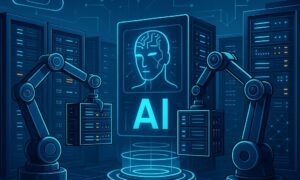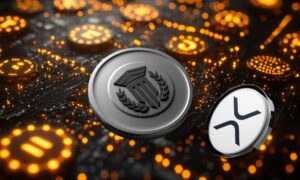Welcome to the future! The Internet of Things (IoT) has taken the world by storm, revolutionizing the way we live and interact with technology. From wearables that track our every move to smart homes that anticipate our needs, a new era of connected devices is upon us. In this blog post, we will uncover the next wave of IoT devices that are set to change the game and push boundaries like never before. Get ready to be amazed as we unveil these cutting-edge innovations and explore how they will shape our daily lives in ways we couldn’t have imagined. Are you ready for what’s next? Let’s dive in!
Introduction to the Internet of Things (IoT)
The Internet of Things, or IoT, is a network of connected devices that can communicate with each other and exchange data over the internet. These devices can range from everyday objects like light bulbs and thermostats to complex systems such as self-driving cars and industrial machinery. The concept behind IoT is to create a seamless connection between the physical world and the digital world, enabling these devices to gather, analyze, and share information in real-time.
The term “Internet of Things” was coined by Kevin Ashton in 1999 as part of his research at MIT on radio-frequency identification (RFID) technology. However, it was not until the early 2000s that advancements in wireless technologies and miniaturization allowed for widespread adoption of IoT devices.
Today, IoT has become an integral part of our daily lives, whether we realize it or not. From fitness trackers that monitor our steps and sleep patterns to smart home assistants like Amazon Echo and Google Home that control our lights and appliances with voice commands – every aspect of our lives is being affected by this technology.
Evolution of Wearables and Smart Home Devices
The idea of wearing technology has been around for decades, with wristwatches being one of the earliest forms of wearables. However, it wasn’t until recent years that we saw a significant rise in the popularity and functionality of wearables and smart home devices.
Early wearable devices were limited to basic functions like telling time or recording steps, but as technology advanced, so did the capabilities of these devices. In the 2010s, we witnessed a surge in wearable fitness trackers, such as Fitbit and Nike Fuelband, which could track activity levels, heart rate, and sleep patterns.
But what really sparked the evolution of wearables was the introduction of smartwatches. The first commercially successful smartwatch was Pebble Time, launched in 2012. It paved the way for other major brands to enter the market like Apple with its Apple Watch and Samsung with its Gear series.
These smartwatches offered more than just fitness tracking; they could receive notifications from smartphones, make payments through contactless technology, and even control other connected devices. This marked the beginning of wearables becoming an integral part of our daily lives.
As for smart home devices, they have been around since before the term “Internet-of-Things (IoT)” was coined. The main goal behind these devices has always been to make our homes more comfortable and convenient by automating certain tasks.
Current State of IoT Devices
In recent years, the development of Internet of Things (IoT) devices has rapidly expanded, with smart technologies permeating every aspect of our lives. From simple fitness trackers and smart watches to complex home automation systems, IoT devices have become an integral part of modern society. In this section, we will take a closer look at the current state of IoT devices, exploring their growth, usage, and impact on various industries.
One of the main drivers behind the popularity of IoT devices is the increasing connectivity and accessibility provided by advancements in technology. With almost everything now being connected to the internet, from smartphones to refrigerators and even clothing items, there has been a surge in demand for smart interconnectivity. As a result, the global market for IoT devices is expected to reach USD 1 trillion by 2025 according to a report by McKinsey & Company. This exponential growth can also be attributed to the decrease in prices for essential components such as sensors and processors.
Furthermore, IoT devices have found widespread adoption across various industries including healthcare, retail, transportation, agriculture and manufacturing. In healthcare particularly, wearable devices such as fitness trackers or heart rate monitors have revolutionized how people monitor their health on a day-to-day basis. These wearable gadgets collect valuable data points such as heart rate variability and sleep patterns allowing users to analyze their health trends over time.
The retail industry has also experienced significant changes due to IoT technologies. Smart shelves equipped with sensors can track inventory levels in real-time allowing retailers to accurately predict demand and reduce waste. Additionally, customers can also benefit from automated checkout systems, such as Amazon Go stores, where they can simply pick up items and walk out without having to wait in line to pay.
In transportation, IoT devices are used for fleet management, tracking vehicle performance and optimizing routes. This has enabled companies to streamline their operations, reduce costs and improve customer experience. For example, trucking companies use IoT sensors to monitor the condition of their vehicles in real-time, alerting them of any maintenance issues before they become major problems.
In the agriculture industry, IoT devices have enabled farmers to increase efficiency by collecting data on soil moisture levels and weather conditions. This allows them to optimize irrigation schedules and make informed decisions about crop management. In addition, sensors on farm equipment can provide real-time insights into fuel usage, allowing farmers to identify ways to reduce costs.
While the growth and adoption of IoT devices have brought many benefits, it has also raised concerns surrounding data privacy and security. With more devices connected to the internet, there are increased opportunities for cyber attacks and breaches of personal information. As a result, there is a growing need for regulations and standards to ensure the safety of personal data collected by IoT devices.
Future Predictions for IoT Growth
The Internet of Things (IoT) has already transformed the way we live and work, and its growth shows no signs of slowing down. With more devices becoming connected to the internet every day, it’s clear that the future of IoT is bright and full of exciting possibilities. In this section, we will explore some predictions for the future of IoT growth.
1. Increase in IoT Devices: Experts predict that by 2025, there will be over 75 billion connected devices worldwide. This includes everything from smart homes to wearables to industrial equipment. As technology becomes more affordable and accessible, we can expect to see a significant increase in the number of IoT devices being used in our daily lives.
2. Adoption across Industries: The use of IoT is not limited to just consumer products; it is also being embraced by various industries such as healthcare, manufacturing, retail, transportation, and agriculture. By utilizing IoT sensors and data analytics, these industries are able to improve efficiency, reduce costs, and enhance customer experiences.
3. Advancements in Artificial Intelligence (AI): As AI continues to advance, it will play an even larger role in shaping the future of IoT. With smarter algorithms and machine learning capabilities built into IoT devices and systems, they will be able to analyze data faster and make more accurate predictions. This will lead to more personalized experiences for users as well as improved automation processes for businesses.
How Will IoT Impact Our Daily Lives?
The Internet of Things (IoT) is rapidly transforming the way we live, work, and interact with technology. From wearables like fitness trackers to smart home devices that can control every aspect of our living spaces, IoT has already made a significant impact on our daily lives. But as this technology continues to advance and evolve, its influence on our routines and habits is only going to grow.
One area where IoT is expected to have a major impact is in making our daily tasks more seamless and efficient. With the integration of various devices, sensors, and networks, IoT will enable us to automate mundane chores and streamline processes like never before. For example, imagine waking up to your coffee machine brewing your morning cup as soon as your alarm goes off or having your fridge automatically order groceries when you’re running low.
IoT will also play a crucial role in improving health and wellness. Wearable devices such as smartwatches and fitness trackers are already helping people track their physical activity levels, heart rate, sleep patterns, and more. But it doesn’t stop there – these devices are also being developed for monitoring chronic conditions such as diabetes or asthma. With the help of real-time data collection and analysis from these devices, doctors can provide more effective treatments tailored specifically to an individual’s needs.
Challenges and Concerns surrounding IoT Devices
The rise of IoT devices has brought about significant advancements in technology and convenience, but it also comes with its fair share of challenges and concerns. As more and more devices become connected to the internet, there are growing concerns surrounding privacy, security, and sustainability.
1. Privacy Concerns:
With the increasing number of IoT devices collecting personal data such as location, browsing history, and daily habits, many are worried about how this information is being used. There have been several incidents where vulnerable IoT devices were hacked, compromising sensitive information. Moreover, there are also fears that these devices can be used for surveillance by both companies and governments.
2. Security Risks:
Connected devices are susceptible to cyber-attacks if they do not have adequate security measures in place. Since many IoT products operate on outdated software or do not receive regular security updates, they become easy targets for hackers. A breach in one device can also lead to a complete network compromise, putting all connected devices at risk.
3. Lack of Industry Standards:
As the market for IoT devices continues to expand rapidly, there is a lack of uniform standards across different manufacturers. This makes it challenging for consumers to ensure that their connected products comply with safety regulations and privacy laws.
4. Interoperability Issues:
Many IoT products run on different platforms developed by various manufacturers which often leads to compatibility issues between different systems making it difficult for them to communicate with each other smoothly.
5.Lack of User Awareness:
While the benefits of having smart homes or appliances may seem enticing, many users are not aware of the potential security risks involved with using these devices. Lack of knowledge or negligence in securing these devices can make them an easy target for cybercriminals.
6. Data Overload:
The vast amount of data collected by IoT devices can be overwhelming and difficult to manage. Without proper data management systems in place, handling and analyzing this data becomes a significant challenge.
7. Environmental Impact:
The widespread use of IoT devices also raises concerns about their environmental impact. Most of these devices use non-renewable energy sources, and their disposal also poses environmental hazards due to the presence of hazardous materials.
8. Dependence on Technology:
As we become increasingly reliant on technology, there is a concern that the failure or malfunction of IoT devices could have significant consequences on our daily lives. This dependency may also lead to a lack of critical thinking skills and problem-solving abilities among users.
Conclusion
As we continue to advance in technology, it is clear that the Internet of Things (IoT) will play a huge role in shaping our future. From wearables such as fitness trackers and smart watches, to smart homes controlled by our phones, these devices have already made a significant impact on how we live our day-to-day lives. And with the constant innovation and development in this field, there’s no telling what incredible IoT devices will be unveiled next. The possibilities are endless and I look forward to seeing how they will further enhance our lives in the years to come.



































